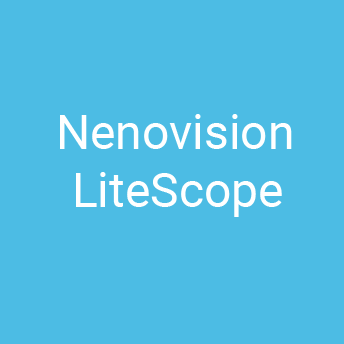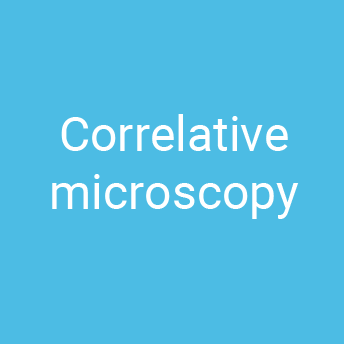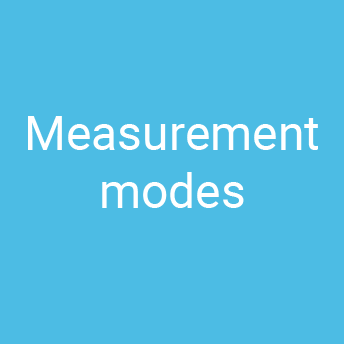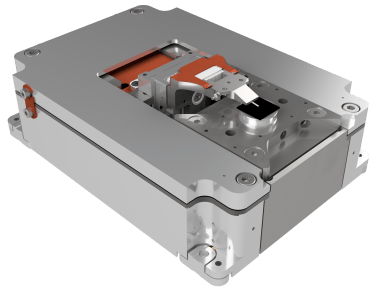
Accessories for LiteScope™
- Autosensing probes and probe holders
- Tuning fork-based probes
- Piezoresistive probes
- Conductive wire
- Nanoindentation module
- Sample rotation module
- NenoCase
- Load lock mechanism
- Stubs, tools and sample holders
Autosensing probes and probe holders
LiteScope supports a variety of autosensing probes through proprietary probe holders.
LiteScope is not limited to the use of proprietary AFM probes, but supports a wide variety of third-party autosensing probes via suitable probe mounts. The AFM probe can be easily inserted into the appropriate probe holder and then attached to the LiteScope Universal Holder Acceptor, without the need for screws or tools.
key features
- Utilization of a variety of self-sending probes
- Easy and fast probe replacement
- Universal acceptor for different probe holders
- NenoView SW preset layouts for individual probes
- Up to 3 input/output customer signals on probe holder
Tuning Fork Based Probes
The use of the quartz crystal tuning fork for AFM application is based on the high Q resonance detuning effect when the tip mounted on the oscillating quartz is brought closer to the surface. Tuning fork-based probes possess many advantageous properties, such as high rigidity, stable oscillation, direct electrical drive, and low cost.
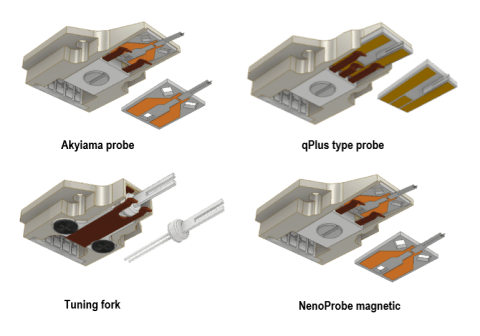

piezo-resistive probes
Silicon cantilevers with an integrated piezoelectric resistor are available in many different specifications suitable for various applications.
PRSA – With an integrated piezoelectric resistance bridge and thermal heater for auto-sensing and auto-activation.
PRS - with an integrated piezoelectric resistance bridge, without thermal heater
Conductive wire
Basic probe for STM and local voltage/current measurement in nano keyer mode.
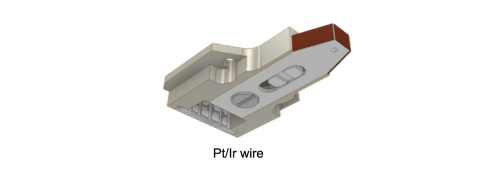
probes and techniques
| Mechanical properties of materials | Application | Research |
|---|---|---|
| Atomic Force Microscopy (AFM) | topography | Akiyama, PRSA |
| power dissipation | local elastic properties (tapping mode) | akiyama |
| Force Modulation Microscopy (FMM) | local elastic properties (contact mode) | CHEST |
| Force-distance curves | local elastic properties (not topographical) | CHEST |
| Nanoindentation | various on-site operations | Akiyama, PRSA |
| AFM conductivo (C-AFM) | conductivity map | NenoSonda |
| CPEM conductivo (C-CPEM) | conductivity map including isolated areas | NenoSonda |
| Kelvin probe force microscopy (KPFM) | local surface potential | NenoSonda |
| electrical spectroscopy | local electrical properties (not topographical) | NenoSonda |
| Scanning tunneling microscopy | Sub-nanometer topography | PT-Ir wire |
| Piezoelectric Response Force Microscopy (PFM) | piezoelectric domain imaging | NenoSonda |
| Magnetic Force Microscopy (MFM) | magnetic properties | Magnetic Child Test |
Nanoindentation module
The Nanoindentation Module is a new module for the LiteScope Atomic Force Microscope. It enables quantitative measurements of the mechanical properties of samples, combined with AFM analysis during real-time observation in SEM. The entire device can be switched on and off at any time, offering the choice between regular correlated AFM SEM measurements or a unique combination of nanoindenter and AFM, both in SEM.
key features
- Comprehensive analysis using multiple techniques that enable a complex understanding of nanomechanical properties in relation to sample composition and surface topography.
- Nanoindent characterization with time-efficient, high-resolution topographic analysis.
- Real-time SEM observation using Parallel SEM providing enhanced control over experimental conditions as well as imaging and recording of the nanoindentation process.
- Specific nanoindentation tips ensure quantitative analysis of mechanical properties.
- Modular system allows for simple switching between AFM and nanoindentation configurations .
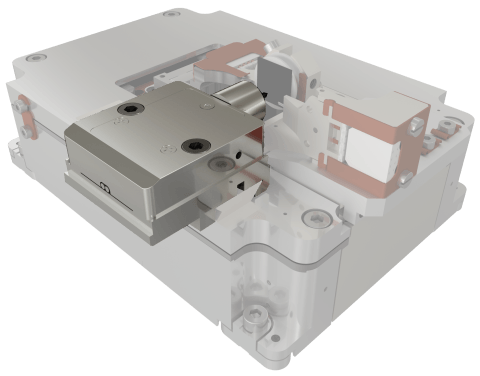
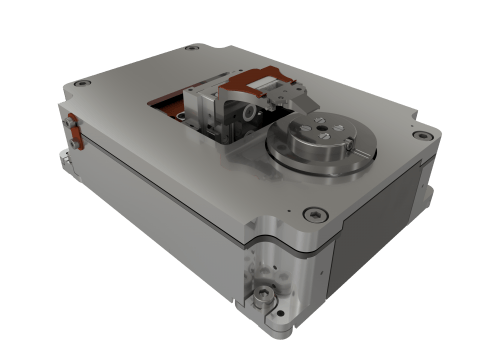
Sample rotation module
The LiteScope AFM-in-SEM sample rotation module allows multiple samples to be mounted in the SEM chamber simultaneously and their correlative AFM and SEM measurements to be made without opening the chamber. The rotation module is also extremely useful for FIB reaming procedures followed by AFM analysis.
key features
- Multi-sample analysis – The LiteScope module supports multiple samples that can be analyzed without the need to open the SEM camera
- Extended scanning area – The ability to rotate samples allows samples to be analyzed in the area with a diameter of up to 2 cm.
- Exact positioning of the Specimen: Optimized FIB milling and adjustable orientation of the specimen with respect to scanning and analysis of SEM techniques
NenoCase
NenoCase is a new accessory for a LiteScope atomic force microscope. NenoCase is not only an easy-to-use storage case, it also brings new possibilities that allow LiteScope to function as a stand-alone device. It incorporates a passive anti-vibration system to guarantee high quality images outside the SEM camera.
NenoCase can be purged with different gases used for measurements in different atmospheres.
key features
- Storage of LiteScope in vacuum or desiccated environment to eliminate unwanted water adsorption during storage outside of SEM.
- Full operation of LiteScope outside of SEM in vacuum or in various atmospheres.Equipped with passive vibration protection.
- Possibility to use controlled atmospheres as N2, Ar, etc.
- Adjustable platform level.
- The transparent design of the top cover allows the use of a light or stereo microscope to find structures or navigate with the tip.
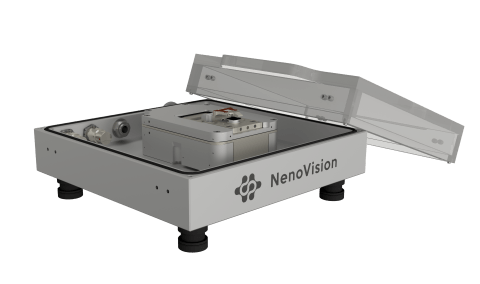

NenoCase with camera
A digital camera with a custom-made mount is an optional NenoCase accessory that enables precise navigation of the AFM optical tip on the sample surface. Camera control is integrated directly into the NenoView software, allowing for a long working distance.
load-lock mechanism
The LiteScope load lock mechanism provides the ability to load samples and probes into the LiteScope using a standard SEM load lock/air lock sample transfer system.
The Load Lock is an optional accessory for the LiteScope, allowing quick and easy exchange of samples and/or AFM probes without the need to interrupt the high vacuum in the SEM chamber.
The semi-automatic loading system consists of two adaptation arms:
- The sample loading adapter allows samples to be loaded directly into the LiteScope scan head by manual movement of the SEM transfer arm. The probe loading adapter allows the probe to be conveniently exchanged together with the probe holder.
Key features/benefits
- Reduced sample/probe change.
- Time No need to open or vent the SEM chamber for sample or probe exchange
- Simple operation via NenoView SW
- Can be used with standard manual SEM Air-lock / Load-lock systems
- Semi-automatic loading/unloading of samples and variety of AFM probes
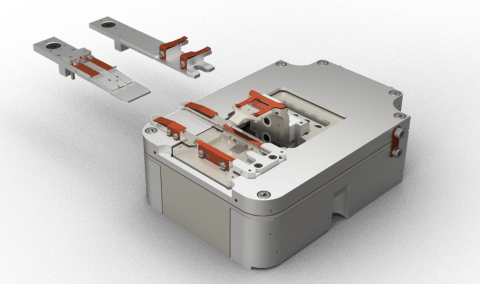

Stubs, tools and sample holders
LiteScope is compatible with many standard SEM stubs; however, custom stubs, specimen holders, or a variety of specialized tools can be adapted for specific AFM applications in SEM.
The AFM-in-SEM approach provides access to measurements and applications that were not possible with separate AFM and SEM systems.
From the heated/cooled stage for eg life science applications to micro tensile testing for eg metal characterization, tell us about your requirements so we can get the most out of the AFM-in-SEM concept.



